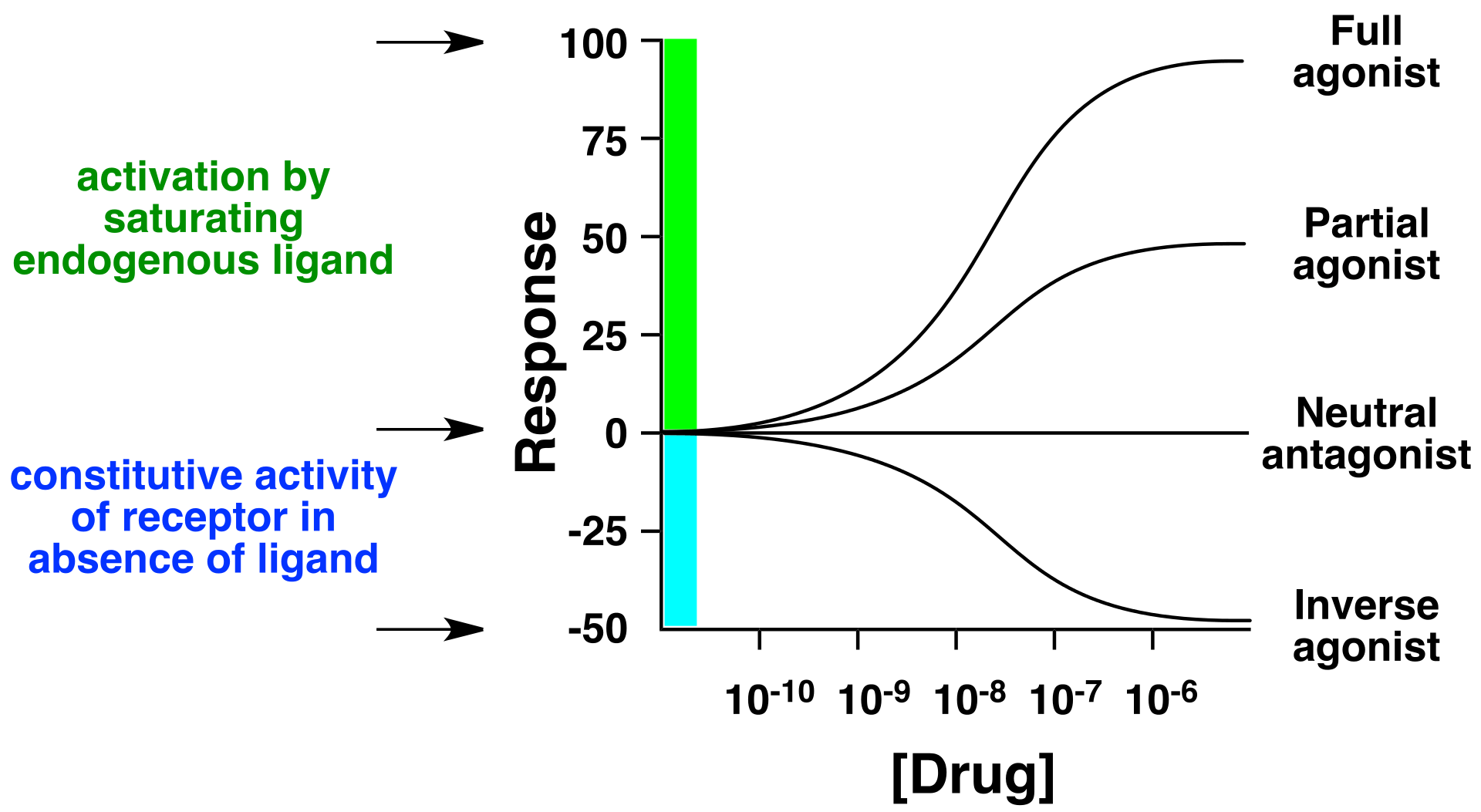Pharmacodynamics: It is the study of “what the drug does to the body”. This includes action of drugs on receptors and their effects, dose-response curves etc.
Mechanisms of drug action: Drugs act through receptors, inhibition or activation of enzymes and transport processes, and by altering the effects of endogenous neurotransmitters and bioactive substances by affecting their synthesis, release and/or metabolism. Some drugs act as chelating agents or osmotic diuretics. Drugs may act through a combination of above mechanisms as well.

| Type of drug | Characteristics | Examples |
| Agonist | Drug binds to receptor and produces desired response | Epinephrine binding on beta 1 receptor increases heart rate |
| Antagonist | Drug binds to a receptor and prevents an agonist from binding to the receptor; antagonists do not themselves have inherent activity on the receptor | Propranolol binding to beta receptor prevents epinephrine binding to beta receptor so that epinephrine is not able to increase heart rate |
| Partial agonist | Drug binds to a receptor resulting in less effect than that produced by an agonist on the same receptor | Buprenorphine on opioid receptors; Beta blockers with intrinsic sympathomimetic activity like pindolol, acebutolol; aripiprazole on dopamine receptors |
| Inverse agonist | Drug binds to a receptor producing a response that is opposite to the effect of an agonist e.g. if agonist binding increases heart rate then inverse agonist binding decreases heart rate and antagonist binding will not allow the heart rate to increase, but it definitely would not decrease from baseline. In the presence of an agonist, the inverse agonist behaves like an antagonist. | Carvedilol on beta receptors, naloxone on opioid receptors |
An antagonist can inhibit the actions of both agonists and inverse agonists.
Sign up for free to take 1 quiz question on this topic